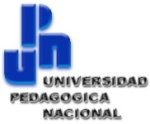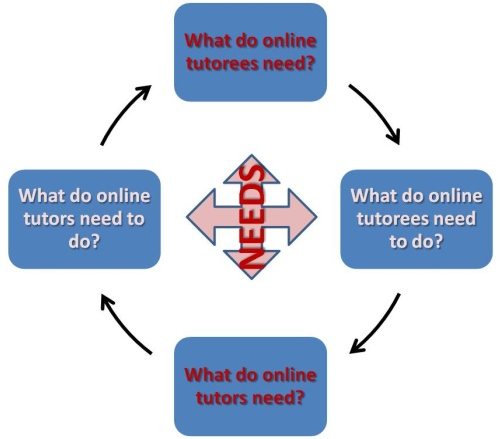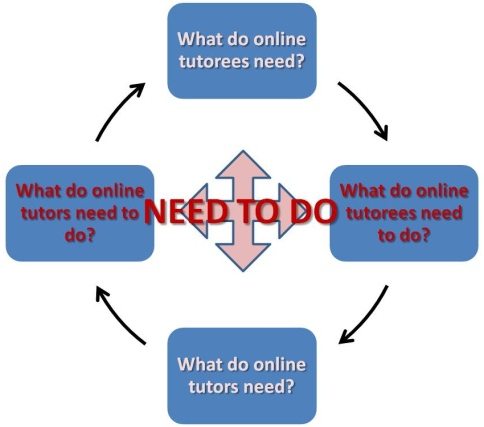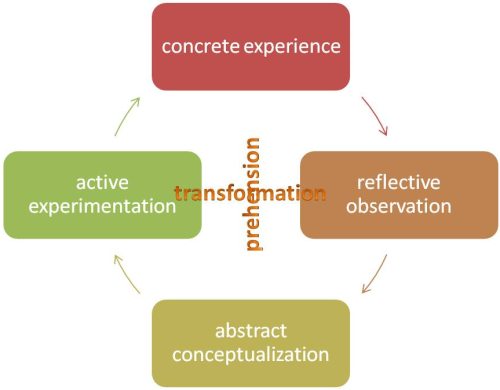
Task-based Tutor Training Online
Alma Daniela Otero S. and Nevin Siders, Mexico
Alma Daniela Otero holds a degree in Pedagogy from the Universidad Intercontinental, and has completed master’s studies at that institution. At the Universidad Pedagógica Nacional she is an English teacher and is a member of the team authoring the online diploma course for tutor training. e-mail: danielaotero@yahoo.com.mx
Nevin Siders holds a Master’s in Applied Linguistics at the Universidad Autónoma Nacional de México, and is a tenured professor of Educational Psychology and English at the Universidad Pedagógica Nacional. He is Senior Consultant at Kent Consulting and Editor of The Bridge, an offspring of HLT Magazine. e-mail: tnevin@upn.mx
Menu
Abstract
Background
What do online tutorees need?
What do online tutors need?
Needs of both tutorees and tutors
What do online tutorees need to do?
What do online tutors need to do?
How ready are today’s teachers?
Conclusions
Acknowledgment
References
This article discusses elements that online tutors need to take into account to improve their professional practice. It shares the experience of an online course for future tutors the UPN designed to reflect on such issues, an intervention which implied the construction of a learning community between the participants and the tutors themselves. Topics selected for this course included the themes of building a virtual community, e-tutoring, the roles of tutors and virtual classroom management, student motivation, cooperative learning online, assessment, evaluation, and feedback. At the end it presents the results from an initial survey made among potential participants.
The authors are from Mexico City’s Universidad Pedagógica Nacional. It is our position that online tutors need more than mere technological tools to guide classroom English teachers toward humanistic education in this new setting. Considering that most teachers teach the way they were taught, in combination with the fact that knowledge is situated, the tutor provide learning opportunities so that their tutorees can experience problem-solving tasks, and thus become able to implement such activities confidently in their professional practice.
Therefore this contribution considers some of the ideas and contents for a distance course which trains online tutors, particularly tutors of English teachers in public junior high schools (students of 12-15 years of age).
In our view, there are two major participants, the tutor and the tutoree, and what course designers must ask themselves is what each of these stakeholders requires.
Equally important is what each of them is responsible for, which constitutes the requirements for them to perform well during a course.
The interaction of all of these factors — who the participants are, what their respective needs are, and what they must do — can be symbolized by placing arrows among the actors and their roles. Figures 1 and 2 show how each impacts the other before a course begins, while it is underway, as well as afterward.

Figure 1: Need Factors

Figure 2: Responsibility Factors
This article deals with both the vertical and horizontal dimensions in these graphics. We begin with what tutors and tutorees need.
Tutorees need to be guided and monitored by the tutors most of the time, since they usually require assistance with the technology. Therefore instructions and directions must be clear, otherwise participants including the tutors get lost and do not fulfill the course requirements.
Another issue that has to be taken into account is, from our experience, demonstration of the ICT tools through which tutorees will be able to become familiar with the courseware tools, which in our case were Skype, forums, blogs, wikis, Moodle, and the like.
The construction of a learning community with peers is crucial to distance education become this is the only opportunity participants have to involve themselves in thinking together, that is to say, in social cognition. This kind of cooperative learning can be built through debating and role playing carried out via these same synchronous and asynchronous tools.
Tutorees also need to deliver punctually their questions, postings, and projects, so as to be able to follow the instructions for intra-site activities (such as forums) and take the initiative in inter-site activities (e.g. Skype).
In addition to these technological learning issues, middle school teachers have the need to know the recently-implemented curriculum which they are responsible for. Nowadays, Mexico’s curriculum utilizes Kolb’s Experiential Learning Model, reproduced in Figure 3, where the cycle begins at twelve o’clock and culminates at nine o’clock: these two stages involve the learner’s personal interaction with new knowledge. These experiential stages envelop two reflective stages at three and six o’clock: the first about the content itself and the latter about its place in the broader world.

Figure 3: Reproduction of Kolb’s Experiential Learning Model
Briefly, the Experiential Learning Model consists of four dimensions, two of which have to do with the acquisition of new information, and two of which imply transformation of that new information. What is interesting about this particular teaching cycle is the movement from experience to abstraction and back to experience, as may be appreciated in the Figure 3.
Now that we have considered what the tutorees need in their training to become online tutors, it is now time to look at what the tutors of those future tutors need.
Going back to Figure 1, we see how the lower end of the arrow points to the needs and requirements a distance tutor has.
Of all the characteristics tutors must have, the most important is empathy, the vision to put themselves into the tutoree’s keyboard.
The facet that can not be overlooked is the requirement to know the technology, and also be able to assist others with it. We recommend looking at Dundeney and Hockly’s book, How to Teach English with Technology, for descriptions of a wide variety of tools such as e-mail, webquests, chat, authoring tools, podcasts, blogs, and wikis.
Another critical competency an online tutor must possess is the ability to construct online sessions which foster a learning community. Among the techniques are the survey, the rhetorical question, and the straightforward direct question.
It is becoming well known within the educational community that it often takes more time to create and carry through tasks online than in the traditional classroom. Moreover, a tutor must schedule time to be able to review work in progress promptly and to punctually review work completed, because the great majority of this feedback is by personal e-mail.
Before moving on to the next section about performance, we should mention two competences that are common to both tutors and tutorees.
While it is obvious that this is crucial for tutors, it is likewise crucial for tutorees to be able to answer to questions quickly and directly—and allot the time to do so.
Both roles are obliged to be punctual and direct with their respective feedback on postings and projects to each other as well as to their peers.
Now we will turn to the horizontal dimension highlighted in Figure 2: what each stakeholder needs to do. We will start with the right arrowhead, which points toward the responsibilities in an online course that in-service teachers may have.
The interactive activities that tutorees need to perform via e-mail, Skype, and forums within an online course for teachers include making lesson plans, considering the four skills, grammar and vocabulary, content-based skills which is crucial for a meaningful and useful course.
When we gave this presentation as a workshop, the participants made a lesson plan of a mini-project that used online technology. That lesson plan included as much of the background as possible: the topic, the rationale for activity, its aim, the student’s mastery of English, their ages, social background, previous knowledge, the interactional patterns, possible problems and solutions, timing, aids, and so on. The participants took their lesson plans home.
Now that we have had a look at what participants should be asked to do as part of their training, let us turn to the actions the tutors of those future tutors must carry out.
As we can see at the left end of the arrow in Figure 2, online tutors likewise have responsibilities to perform. Many of the duties concerning teaching are mentioned above in the section about the tutor’s needs. In addition to those, we have some others to bring to your attention.
An online tutor must provide an endless font of motivation.
Equally important is to have the time and patience to resolve any kind of tutoree concern.
Detect participants’ previous knowledge of both the content and the technological tools.
Material selection is another key area of learning in which future tutors need to constantly improve their skills, as well as their ability to upload the materials selected.
Tutors need to be able to create, take, and adapt tasks and activities from the net in accordance with their context.
They must also provide models and demonstrations for the participants in order to achieve the goals required for their projects.
Knowledge of and sensitivity to copyright laws is critical during the stage of creativity and selection of materials. Being a legalistic concern, this issue brings us to the topic of the tutor’s administrative duties, among which we find the following.
A high priority is to monitor the groups to keep them going.
Before a course begins, the tutor or tutors must decide whether to score according to criteria, norms, or some combination of these two. A decision must also be taken as to what constitutes punctuality, for instance, whether e-mail should be answered within 24, 48, or 72 hours.
Concerning the taking of attendance, when the course uses Moodle as a platform, it would seem to be automated, because Moodle registers the time participants are logged on. However, just as in the classroom, the tutorees must have done work previously for this time on the platform to be of good use.
An online tutor will have endless reports of many kinds to produce: to the participant, to the participant’s peers, to the tutor’s peers, to the tutor’s superiors, and to the institution’s administrative departments. There are even cases where the tutor will organize the issuing of certificates and diplomas.
Finally, we need to consider the fact that it is time consuming for the online tutor to deal with many more of the administrative factors than the traditional classroom teacher does. Which brings us to the issue matter of how well contemporary teachers are prepared for this century’s innovative learning environments.
This article is an updated version of a workshop given in Mexico City at the metropolitan convention of the English teacher’s association, MEXTESOL. As part of that presentation in the summer of 2010, we surveyed 20 teachers as to their experiences and opinions. What we discovered was that they are quite favorable to and experienced in 21st century technology, as shown in Table 1.
Table 1: English teacher’s experience of and opinions toward technology
|
Strongly agree |
agree |
Strongly disagree |
| I am very confident using a CD player. |
16 |
4 |
0 |
| I am very confident using a DVD player. |
14 |
6 |
0 |
| I am very confident using e-mail. |
17 |
2 |
1 |
| I am very confident using the camera on my phone. |
9 |
4 |
11 |
| I am very confident using the Internet. |
15 |
4 |
1 |
| Using technology is too time consuming for teaching. |
4 |
8 |
8 |
| Teachers should know how to use educational technology. |
19 |
1 |
0 |
| Technology breaks down too often to use in teaching. |
0 |
14 |
6 |
In response to the questions concerning confidence in using technology, the great majority expressed strong agreement with the use of CD players, DVD players, e-mail, and internet. They also identified with the proposition that teachers should be tech-savvy. Therefore we found it somewhat surprising that less than half held positive attitudes toward using the photographic camera which is included in their own mobile phone.
We were not overly surprised to find a majority of the teachers identified with the disparaging opinion that technology takes too much time to be worthwhile in the educational enterprise, although it should be recognized that less than one quarter of them agreed strongly. Similarly, a majority agreed, although none of them strongly, that technology breaks down too frequently in our country to be useful for teaching.
This article has addressed itself to raising awareness about the advantages and limitations modern teachers confront in online educational environments. It presented the findings from a survey carried out among potential participants in this learning community at a workshop which dealt with tutor and tutoree needs, issues, and duties. We offer it in the hopes that it may serve ourselves and other designers in conforming a checklist of topics to include.
We thank the Mexican Association of English Teachers (MEXTESOL) and the Escuela Bancaria y Comercial, both based in Mexico City, for the opportunity to present a previous version of the contents presented here, and MEXTESOL’s workshop participants for participating in the survey.
Dundeney and Hockly. 2007. How to Teach English with Technology. Malaysia: Pearson.
Sharma, Pete and Barrett, Barney. 2007. Blended Learning. Macmillan.

Please check the Train the Trainer course at Pilgrims website.
Please check the How to be a Teacher Trainer course at Pilgrims website.


|